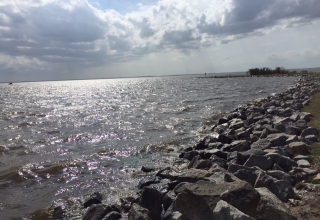
Second, we can focus on the domain of intentions to see if the problem can be best addressed by working in this domain. We might find that the problem exists because there are conflicting desired outcomes associated with this problem (outcomes located on opposite sides of the target). Typically, it is now a matter of sequencing several actions that must be taken to work toward both outcomes. Focus should be placed on action rather than on debating priorities regarding each outcome: “do them both!” should be the motto.
Third, we can focus on the domain of information. The problem might reside primarily in the contradictory or confusing information that we possess. This is where misinformation is likely to creep in. Triangulated analysis (sources and methods) will usually help to resolve this issue. If the contradictions still exist, then it is often useful to “test the market” by offering a description of potential actions to potential stakeholders or even conducting brief and limited pilot tests of these actions. The “real” world will usually “kick back” and let us know what is real and what is unreal.
Here are a set of questions that might be addressed when addressing the nature of a problem:
* How do you know that there is a problem here?
* To what extent do other people see this as a problem? If they don’t, why don’t they?
* How long has this problem existed? How big is it? Is there any pattern with regard to its increase or decrease in magnitude?
* What are the primary cause(s) of the problem? What is different when the problem does and does not exist? What remains the same whether or not the problem exists?
* Who benefits from the continuing existence of the problem? In what ways do you benefit (even indirectly) from the continuing existence of this problem?
* What will you miss if and when this problem is resolved?
When the problem is particularly elusive or important then a more formal and extensive causal/resource analysis might be engaged. Here is a brief description of this five-step process. Its distinctive feature is the comparison to be make with other comparable situations.
Causal/Resource Analysis: At the heart of causal/resource analysis lies the belief that a problem can best be understood if it is compared to another situation as much like itself as possible, but one in which the problem does not exist or is less serious. In most machine or production-line problems, this strategy is fairly obvious, although not always used. An engine that has been functioning correctly begins to misfire; a computer keyboard is no longer working; a bottling line begins to produce an unacceptable. number of rejects.















